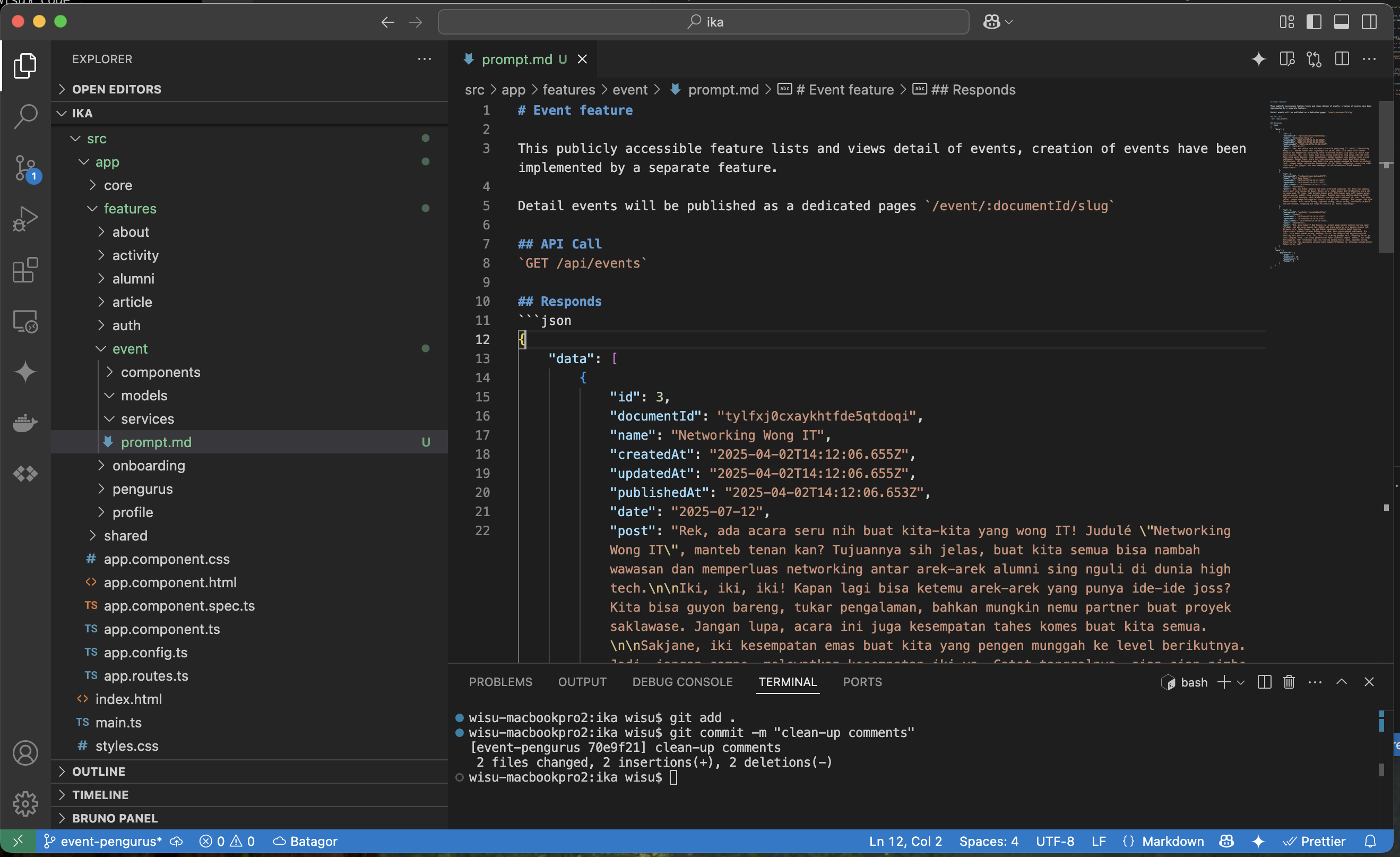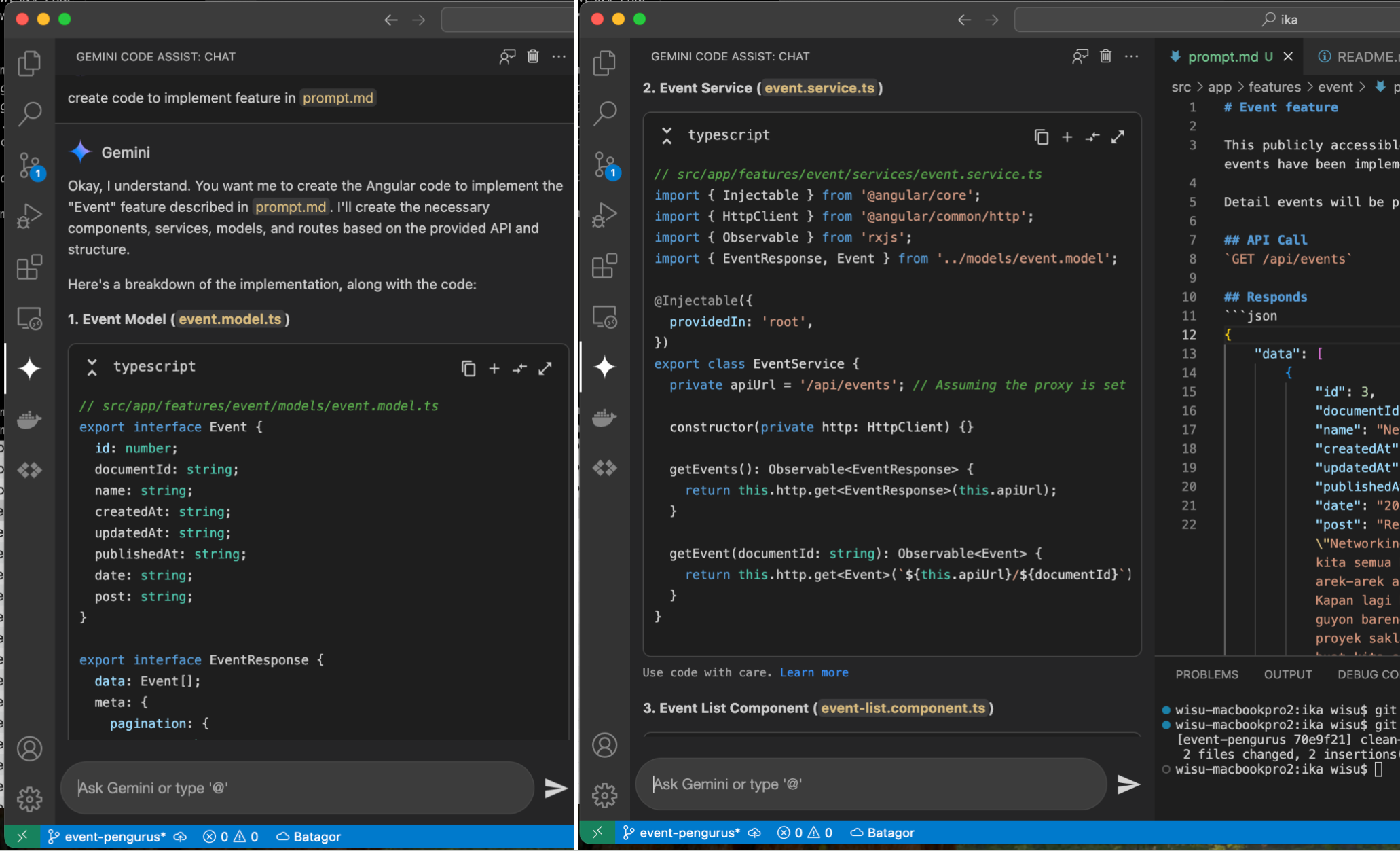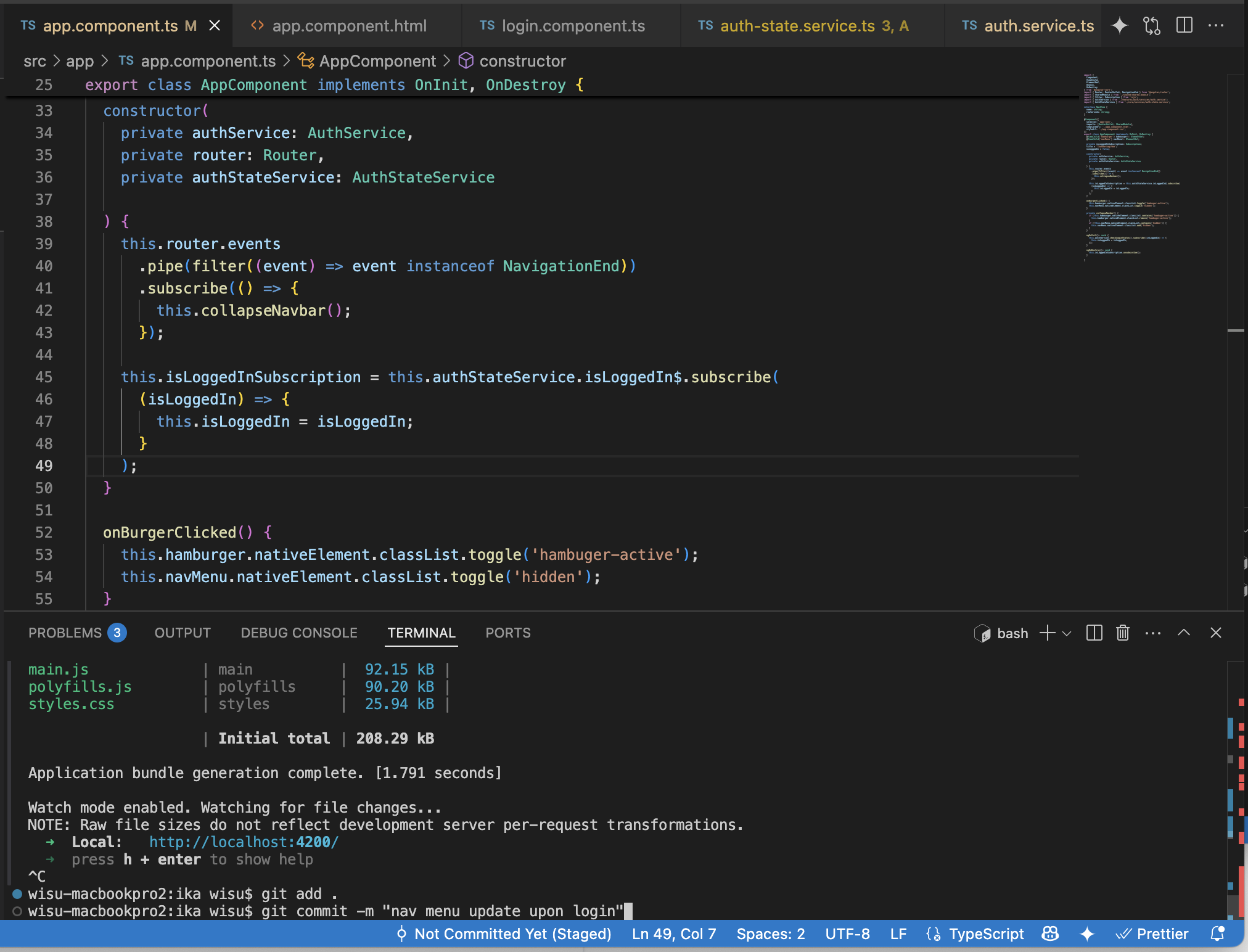Putting Vibe Coding to the Test
The hype around “Vibe Coding” is significant, but translating it into tangible business value requires practical application. I recently explored this by using Gemini Code Assist for Angular frontend development integrated with a headless CMS, focusing specifically on boosting developer productivity and workflow efficiency – key drivers for faster time-to-market in digital initiatives.

My exploration underscore several critical factors for success:
- Context is Crucial for GenAI Effectiveness: Standard prompt boxes often fall short for complex features. I found leveraging detailed Markdown (
.md) files to provide structured, context-rich instructions significantly improved the quality and relevance of GenAI-generated code. This structured input is key to guiding the GenAI effectively. (Bonus: These markdown files can potentially serve as initial documentation or READMEs for the features.)

- Targeting Boilerplate Reduction Delivers Efficiency: GenAI excels at automating repetitive tasks. Reducing the boilerplate inherent in TypeScript (interfaces, service methods) emerged as a prime optimization opportunity. By providing API contracts, Gemini Code Assist efficiently generated the necessary type-safe Angular services and models, drastically cutting manual typing and freeing up developers for higher-order problem-solving, while preserving TypeScript’s long-term maintainability benefits (lowering TCO).

-
Human Expertise Remains Indispensable: My software engineering background was vital for architecting prompts, critically evaluating GenAI outputs, and integrating code effectively. GenAI assistants like Gemini Code Assist are powerful accelerators, amplifying developer capability, but they don’t replace the need for sound engineering judgment and architectural oversight.
-
Rigorous Governance is Non-Negotiable: Integrating GenAI-generated code demands strict process adherence. Diligent use of Git to track every GenAI suggestion proved essential for maintainability, traceability, and risk management – crucial elements for any enterprise application.

The Bottom Line: For enterprise applications, “Vibe coding” isn’t a magic bullet, but a potent tool when wielded strategically. Success hinges on disciplined communication protocols (like .md prompts), targeting specific efficiency gains (e.g., TS boilerplate), and embedding rigorous human oversight and version control within the workflow. Applied correctly, it can significantly accelerate software development and enhance our ability to deliver business value faster.

